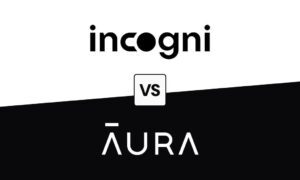As blockchain technology gains mainstream traction, its ability to scale sufficiently to meet demands has been scrutinized. Two primary approaches have emerged to help blockchains achieve the capacity required for mass adoption: Layer 1 and Layer 2 solutions. This piece of content explores the differences between these two scaling methods, i.e. Layer 1 and Layer 2. But first, let us understand what blockchain scaling is.
What Is Blockchain Scalability?
Blockchain technology promises to change systems of economic exchange and information storage. However, decentralized blockchain networks face a structural constraint known as the Scalability Trilemma. This principle states that blockchains struggle to optimize for decentralization, security, and scalability simultaneously.
Decentralization and security are core features of blockchain infrastructure that enable trustless peer-to-peer transmission of value and data. However, they limit transactional throughput and the ability to scale. For context, Bitcoin handles 4-7 transactions per second, while legacy providers like Visa handle thousands per second.
Blockchains must achieve scalability comparable to traditional centralized platforms to see global adoption across finance, supply chains, credentialing, government services, and more. An entire sector of the blockchain industry now focuses on breakthroughs to expand scalability.
Two primary approaches are emerging – Layer 1 and Layer 2 solutions. Layer 1 refers to improvements made at the base protocol layer of a blockchain to enhance capacity. Layer 2 refers to secondary frameworks built on top of a chain to offload transaction volume.
What is Layer 1?
Layer 1 refers to the base blockchain protocol layer. Improving transaction speed or yield directly on this bottom layer is a Layer 1 blockchain scaling solution.
Two major types of Layers 1 scaling are:
Consensus protocol upgrades:
Upgrading the consensus mechanism from proof-of-work to proof-of-stake allows faster transaction validation. For example, Ethereum is transitioning from PoW to PoS to improve scalability.
Sharding:
This partitions the blockchain network into smaller shards that can process transactions in parallel, thereby increasing output. Several blockchain projects are working on incorporating sharding.
The main advantage of Layer 1 blockchain scaling solutions is that they don’t require building secondary layers on top of the blockchain. However, changing the core protocol is complex and risks compromising one of the corners of the scalability trilemma: decentralization, security, or scalability.
What is Layer 2?
Layer 2 refers to solutions built on an existing blockchain to improve scalability without modifying the core protocol. Instead, they only process transactions off-chain and interact with the main chain for settlement. This alleviates the workload of the base layer.
Two major classes of Layer 2 blockchain scaling solutions are:
State channels:
A state channel handles transactions between two or more parties by locking a portion of the blockchain to serve as the initial state. The parties can conduct unlimited interactions off-chain and broadcast only the final state back to the main blockchain. For example, the Lightning Network uses state channels to scale Bitcoin.
Nested blockchains:
An example is the Plasma framework implemented by OmiseGo on Ethereum. It uses “child” chains anchored to the “parent” Ethereum mainnet. Child chains can share computation and handle large transaction volumes, committing only hashed summaries onto Ethereum periodically.
Advantages of Layer 2 blockchain scaling solution include avoiding changes that could destabilise the underlying blockchain and the ability to conduct transactions with lower latency and fees. However, drawbacks are increased complexity and possible security tradeoffs.
Comparing Layer 1 and Layer 2
Several key differences emerge when analyzing Layer 1 versus Layer 2 blockchain scaling solutions:

Assessing the Layer 1 vs Layer 2 Decision
When it comes to determining the right scaling approach, there is no universal answer. Both paths involve difficult technological tradeoffs. However, assessing a few key criteria can help blockchain projects arrive at an appropriate strategy:
-
Network stage
For mature networks like Bitcoin and Ethereum, with extensive usage and market adoption, Layer 2 solutions make more sense. Drastically changing something as intricate as consensus could have disastrous and unpredictable consequences.
-
Use cases
Layer 1 networks offer better support for decentralised applications with complex logic and computation needs. Layer 2 solutions can efficiently scale throughput with lower fees for transferring assets and payments.
-
Community Alignment
Changes to blockchain code must align with the values and vision of the community. For example, sharding better serves Ethereum’s decentralisation ethos versus centralised Layer 2 networks.
-
Resource availability
If sufficient developer resources and funding are available, Layer 1 changes can profoundly impact scalability in the long run. Building a narrowly focused Layer 2 network is more feasible with constrained resources.
Summing it up
Dealing with blockchain scalability remains a huge technological challenge. Layer 1 and Layer 2 offer two broad schools of thought based on either enhancing or bypassing the underlying protocol. While Layer 2 networks currently dominate, innovations in sharding and next-generation Layer 1 blockchain could reshape that landscape.
In the coming years, we may discover whether innovative blended solutions using both Level 1 and Level 2 capabilities can optimize data volumes while stabilizing customization, distribution, and safeguarding. Time will tell if such frameworks can authentically expand universally while keeping the fundamental qualities of blockchain.



































